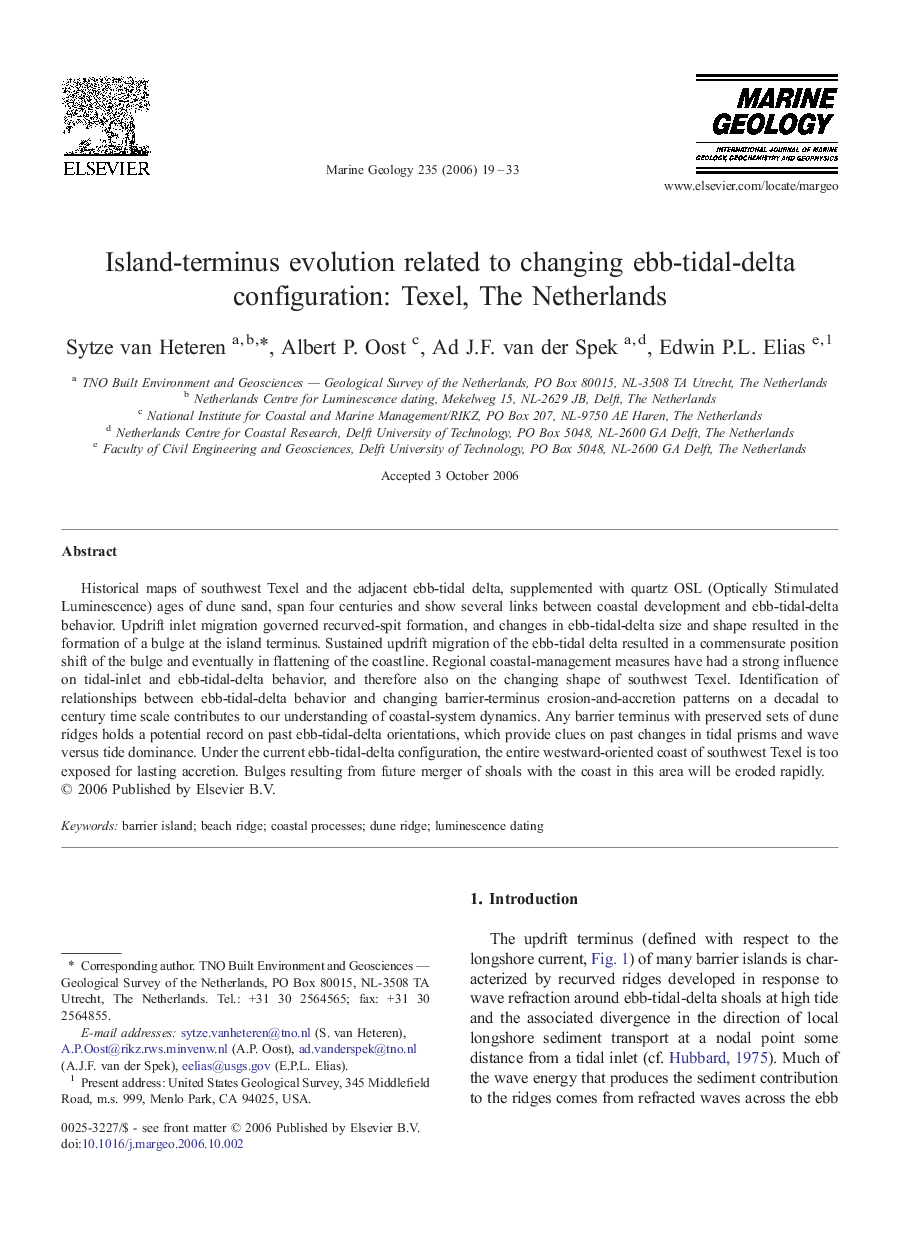| Article ID | Journal | Published Year | Pages | File Type |
|---|---|---|---|---|
| 4719706 | Marine Geology | 2006 | 15 Pages |
Historical maps of southwest Texel and the adjacent ebb-tidal delta, supplemented with quartz OSL (Optically Stimulated Luminescence) ages of dune sand, span four centuries and show several links between coastal development and ebb-tidal-delta behavior. Updrift inlet migration governed recurved-spit formation, and changes in ebb-tidal-delta size and shape resulted in the formation of a bulge at the island terminus. Sustained updrift migration of the ebb-tidal delta resulted in a commensurate position shift of the bulge and eventually in flattening of the coastline. Regional coastal-management measures have had a strong influence on tidal-inlet and ebb-tidal-delta behavior, and therefore also on the changing shape of southwest Texel. Identification of relationships between ebb-tidal-delta behavior and changing barrier-terminus erosion-and-accretion patterns on a decadal to century time scale contributes to our understanding of coastal-system dynamics. Any barrier terminus with preserved sets of dune ridges holds a potential record on past ebb-tidal-delta orientations, which provide clues on past changes in tidal prisms and wave versus tide dominance. Under the current ebb-tidal-delta configuration, the entire westward-oriented coast of southwest Texel is too exposed for lasting accretion. Bulges resulting from future merger of shoals with the coast in this area will be eroded rapidly.
